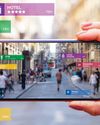
With the ongoing pandemic, Indian retail is undergoing a huge makeover. Despite this, the sector continues to be one of India’s largest industries that makes up for about 10 percent of the GDP and around 8 percent of the employment. Shopping habits have been largely affected during the pandemic, with safety now taking over as a new criterion over price range, variety and convenience. In India, hypermarkets are witnessing lower footfalls and most sectors including apparel, accessories and durables have faced a lack of demand. Essential category players are also facing challenges, albeit of a different kind-managing huge spikes in demand, ensuring liquidity, modifying and managing store operations to maintain safety standards, managing employee and health and grappling with a shortage of staff.
While it is yet to be determined which consumer shopping trends will have a lasting impact coming out of COVID-19, what we know for certain is that the digital shelf is now more important than the physical shelf. While many brands are taking this time to innovate and nd new strategies for greater personalisation and digital connection, they’ll need to ultimately unpack what is a passing trend versus a real shift in consumer behaviour.
KEY ASPECTS:
Considering some of these changes, below are a few key aspects which retailers should consider post the COVID-19 scenario if they are to survive in this new reality:
Going Hyperlocal
New Age Phygital
Using Digital Technologies Maximum
Supply Chain Resilience
Revised Media and Advertising Spends
Staying Close to Customers
هذه القصة مأخوذة من طبعة October 2020 من Images Retail.
ابدأ النسخة التجريبية المجانية من Magzter GOLD لمدة 7 أيام للوصول إلى آلاف القصص المتميزة المنسقة وأكثر من 9,000 مجلة وصحيفة.
بالفعل مشترك ? تسجيل الدخول
هذه القصة مأخوذة من طبعة October 2020 من Images Retail.
ابدأ النسخة التجريبية المجانية من Magzter GOLD لمدة 7 أيام للوصول إلى آلاف القصص المتميزة المنسقة وأكثر من 9,000 مجلة وصحيفة.
بالفعل مشترك? تسجيل الدخول

Building the Midmanagement is Critical in a Scaling Organisation
Nirav Jagad, Chief People Officer of Sugar Cosmetics speaks about ensuring the right! opportunities for the right talent in a complex omnichannel organisation that is on a fast track to growth

Uppercase Upping the Ante
Travel gear brand Uppercase is upgrading the standard of luggage in India through innovative approach and prodcuts and sustainable practices

The Strategy is to Go City by City and Saturate Each
Gerard McGurk, Head of Retail and Commercial Operations at Index Living Mall and Mahesh M, CEO, Creaticity speak about Thailand's numero uno furniture brand's strengths, its India entry and strategy

Design and Experience Differentiate Indriya from Competitors
Sandeep Kohli, CEO of Aditya Birla Jewellery’s Indriya about the brand’s strengths, strategies and aspirations

At Good Glamm, AI Chatbots Have Slashed Workload by 70-80%
Deep Ganatra, Chief Product & Technology Officer (CPTO), The Good Glamm Group sheds light on the role of technology in the beauty and wellness industry and its impact on personalisation

How Blinkit, Swiggy Instamart, Zepto and Others are Redefining Shopping
A quick snapshot of India’s quick commerce landscape highlighting key players, challenges and opportunities

Electronics and Q-commerce: A Marriage of Convenience
Why more and more electronics and gadget brands are taking to q-commerce

5 ways D2C Brands Can Leverage the Power of Technology
The direct-to-consumer (D2C) market in India is at an exciting juncture, with brands redefining how they operate, innovate, and engage with consumers. But what does the future look like for these brands as they adopt technology?

The Business of Offering Immersive Experiences
Shopping centers are using immersive experiences to attract more shoppers and boost business

5 ways D2C Brands Can Maintain the Growth Momentum
D2C brands should embrace a customer-first mindset, leverage technology, and know when to expand offline to keep the growth momentum going